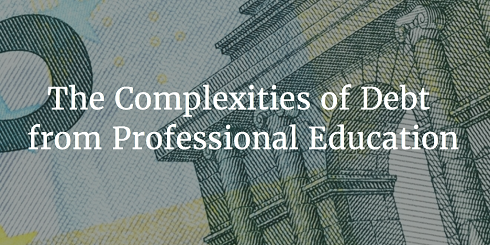- Revenue Cycle Management
- COVID-19
- Reimbursement
- Diabetes Awareness Month
- Risk Management
- Patient Retention
- Staffing
- Medical Economics® 100th Anniversary
- Coding and documentation
- Business of Endocrinology
- Telehealth
- Physicians Financial News
- Cybersecurity
- Cardiovascular Clinical Consult
- Locum Tenens, brought to you by LocumLife®
- Weight Management
- Business of Women's Health
- Practice Efficiency
- Finance and Wealth
- EHRs
- Remote Patient Monitoring
- Sponsored Webinars
- Medical Technology
- Billing and collections
- Acute Pain Management
- Exclusive Content
- Value-based Care
- Business of Pediatrics
- Concierge Medicine 2.0 by Castle Connolly Private Health Partners
- Practice Growth
- Concierge Medicine
- Business of Cardiology
- Implementing the Topcon Ocular Telehealth Platform
- Malpractice
- Influenza
- Sexual Health
- Chronic Conditions
- Technology
- Legal and Policy
- Money
- Opinion
- Vaccines
- Practice Management
- Patient Relations
- Careers
5 Approaches for Addressing the Complexities of Professional School Debt
A recent study proposed approaches to dealing with and minimizing the complexities of debt. We take a look at its applications for physicians.

The goal of becoming a physician generally stems from noble intentions and the daily grind of attaining that goal takes complete focus. The rigors of professional school often leave little, if any, room for much else. For the majority of professional students that are admitted to their program and desired profession, the choice of taking on this on debt is not a choice at all but a necessity.
As the national debt load continues to grow year over year, and future practitioners are reading articles like the” $1 million dollar mistake: becoming a doctor,” it is vital to address the complexities of debt.
A recent article published by Cain et al, looked at the complex issues affecting debt for professional students. Their work furthers support to a policy paper released by the Center for College Affordability making recommendations to reform financial aid, and improve costs.
In addition to recommending that lobbying efforts be directed at securing low-interest loans for student education, they also shed light on the increased need to boost financial literacy at an earlier stage in the education process.
They propose the following five recommendations:
1. Integrate required financial management coursework into the curriculum.
It is difficult to get an intelligent handle on the best methods to manage this heavy of a loan obligation in a few sessions peppered at the end of your tenure as a professional graduate student.
The curriculum of most professional programs is already bursting at the seams with content without forcing more into the schedules of students preparing for their respective professions. However, if supplementary resources and time can made available in a more concerted effort to increase the financial literacy for professional students, it is worth the long term investment.
Areas of Focus: budgeting, Financial, avoiding additional debt, credit, and loan repayment
2. Designate an appropriate faculty/staff member or external expert to provide ongoing financial counseling to students throughout their educational career.
Access to financial aid offices varies among college campuses, and even in the best of scenarios, those services may lack the scope of counseling that students need related to financial management.
It would be beneficial to work on having a more standardized and accessible staff member assigned to students to aid in demystifying the options and how to approach their finances. Just as physicians have to maintain certification through maintenance of certification resources, they can maintain continuing financial education credits that are administered in a fashion that is geared towards their edification on these complex topics.
Area of Focus: A designated Financial Counselor
3. Inform all students about the Federal Student Loan Forgiveness Program, which forgives student debt after a period of service.
Professional students all have different circumstances and career trajectories. This calls for a more tailored program that takes into account these varied inputs and a concrete plan for repayment that they can adhere to.
Area of Focus: Plan for repayment
4. Encourage national organizations to provide financial management programming at association meetings that professional students attend.
The collaborative efforts at each level will best maximize options for students. The current approach of “they will pick it up at some point down the line” needs to be replaced with a more proactive approach.
Area of focus: Collaboration with national organizations
5. Encourage administrators to assess their institution to ensure that students are not overburdened by the cost of their education.
There has been continually increasing demand for enrollment of dual degree programs that enhance understanding of the economics and financial aspects of professional education and practice.
However, a greater emphasis that would be generalizable to all students regardless of concentration would help to increase financial literacy amongst future health professionals.
The onus should not be placed on a select few administrators to fix, it is to be a collaborative effort as to how best to approach such issues as there is no simple fix. As I conclude the last few months of my residency and as that fleeting grace period of repayment approaches, having a sound plan for addressing these complexities is a very real and important issue to me, as I am certain yours is to you. I will do my part to pass on the lessons learned.
What steps are you taking to address the complexities of your debt?
Sources:
Cain et al. Complex Issues Affecting Student Pharmacist Debt
CBS Money Watch
Center for College Affordability
